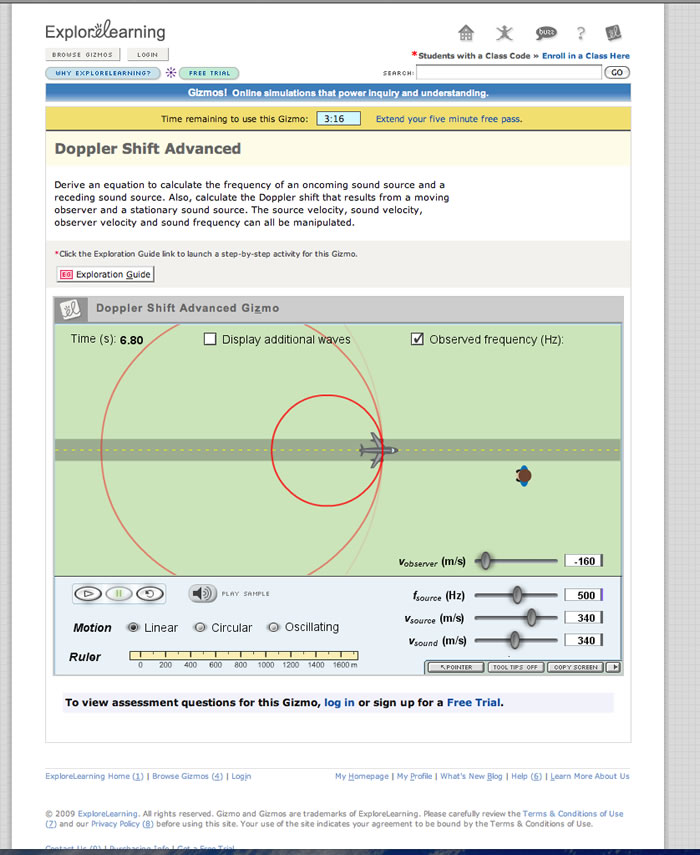Simulated Experiments
(1) Review Internet-Based Science & Math Activities and Experiments- Review ten or more on-line simulations. Provide a 2-3 sentence summary of each simulation and a link to each simulation.

This gizmo on explore learning allows students to manipulate variables that would not be practical in class. Here we have created a sonic boom by having the wave build up on the front of the plane which is called a bow wave. The resulting wave builds up in amplitude (volume) and hence sound very loud when the wave "washes" over the observer.
(2) Teaching with simulations
- Select three related simulations and develop a lesson plan that incorporates all three AND a hands-on activity. Submit the lesson plan on your website and teach the lesson to your fellow students.
(3) Physics Experiments (Interactive Physics) - Optional
(a) Basketball: Design a basketball hoop and shoot a basket. Change the velocity of the ball or the elasticity of the backboard to sink the shot in order to make the basket. Include a printout printout showing that you made the basket.
(b) Shooting gallery: A target is dropped the instant a gun is fired. Should the marksman aim at the target, above the target, or below the target in order to intercept it as it falls? Design an experiment that answers this question. With tracking and component vectors on, run the experiment, and stop it at the moment the projectile intercepts the target. Include a printout of this actual collision.
(c) Falling Objects Galileo said that objects accelerate to the earth at the same rate, regardless of mass. Design an experiment to test this. Compare the velocity of impact of these objects with the velocity of similar objects dropped from the same height on the moon. Report your findings.
(d) Factors affecting the period of a pendulum. Is the period of a pendulum dependent upon its length, mass, or both? Design an experiment to answer this question. Compare your results with real pendulums in the labs. Include a printout of your experimental design.
(e) Simple Harmonic motion. Do a pendulum or a spring exhibit simple harmonic motion? Graph the velocity (vx or vy) or position (x or y) or a pendulum to find out.
(f) Velocity and acceleration: Design an experiment that monitors the vertical position, velocity, and acceleration of a projectile. Include a printout similar to the figure below. What is the relationship between velocity, and acceleration?
